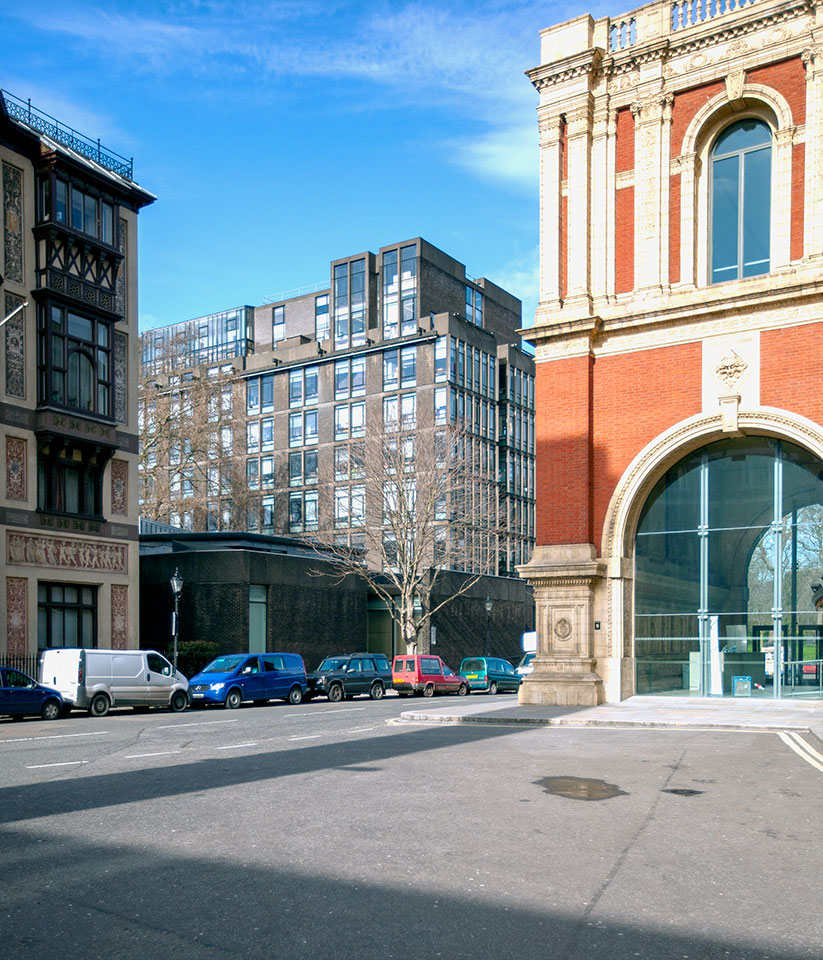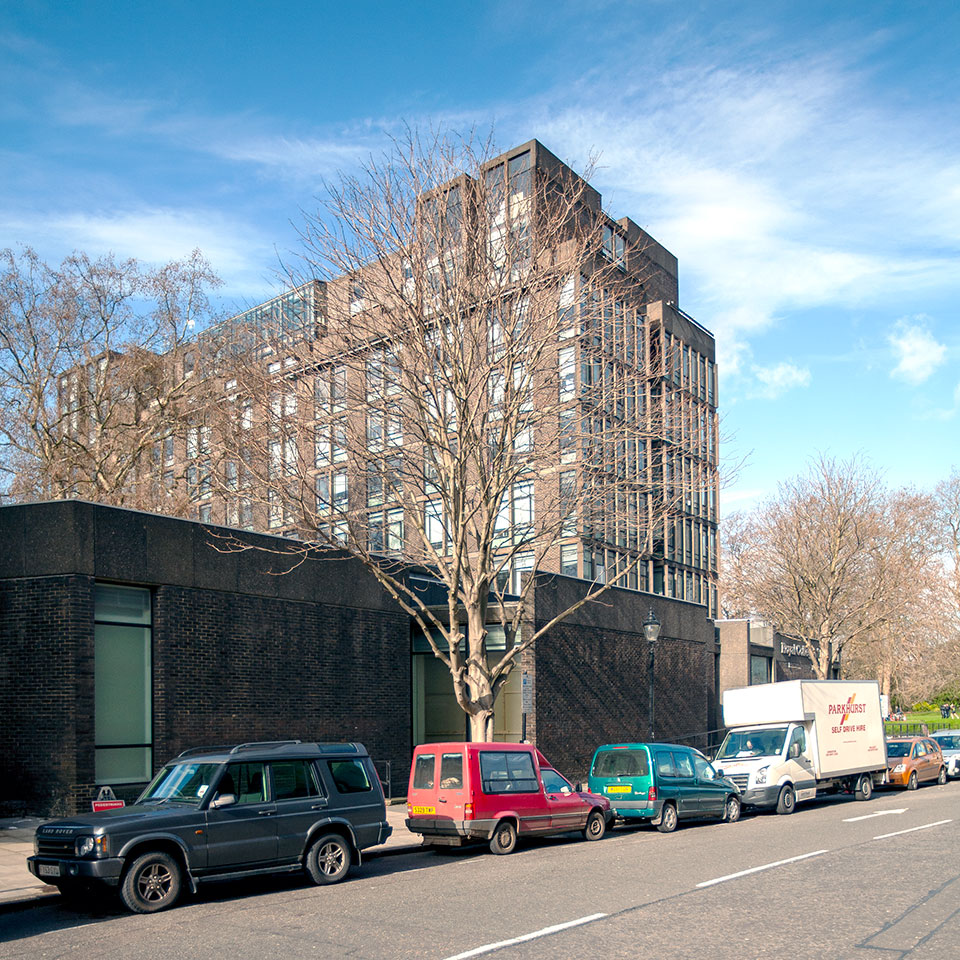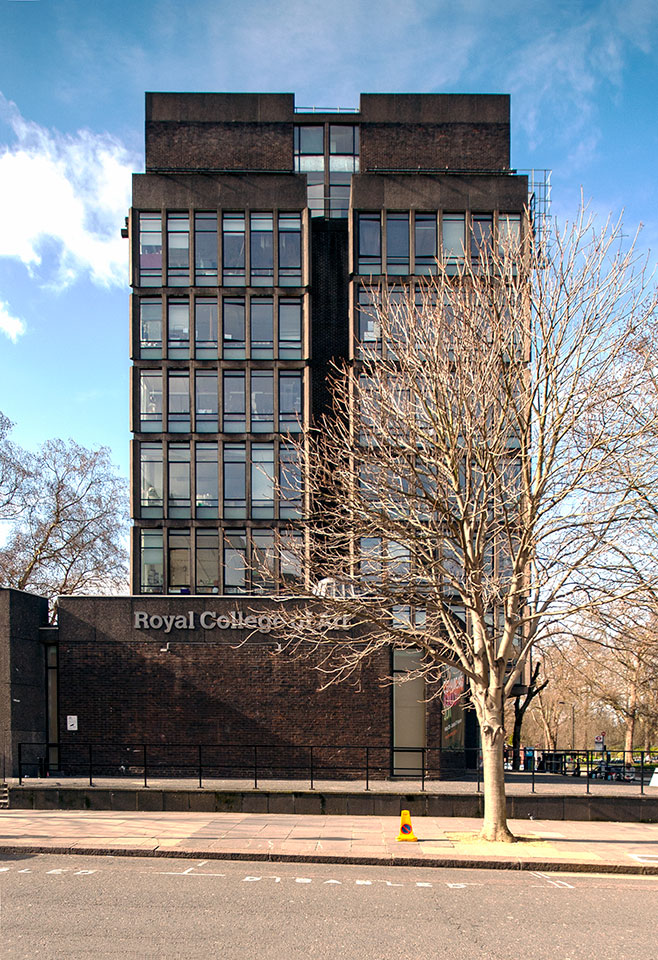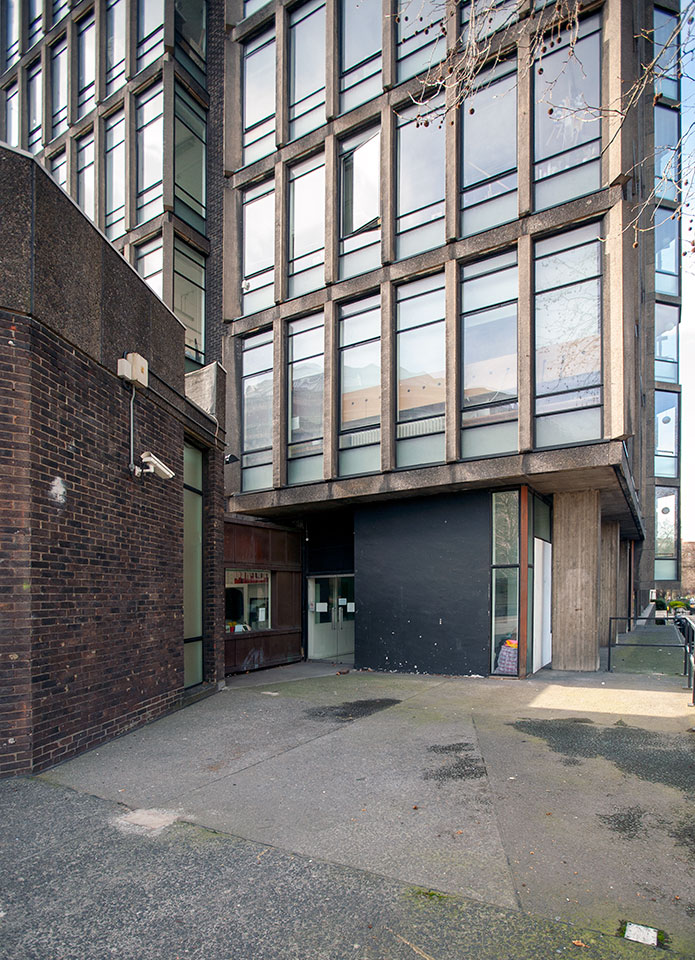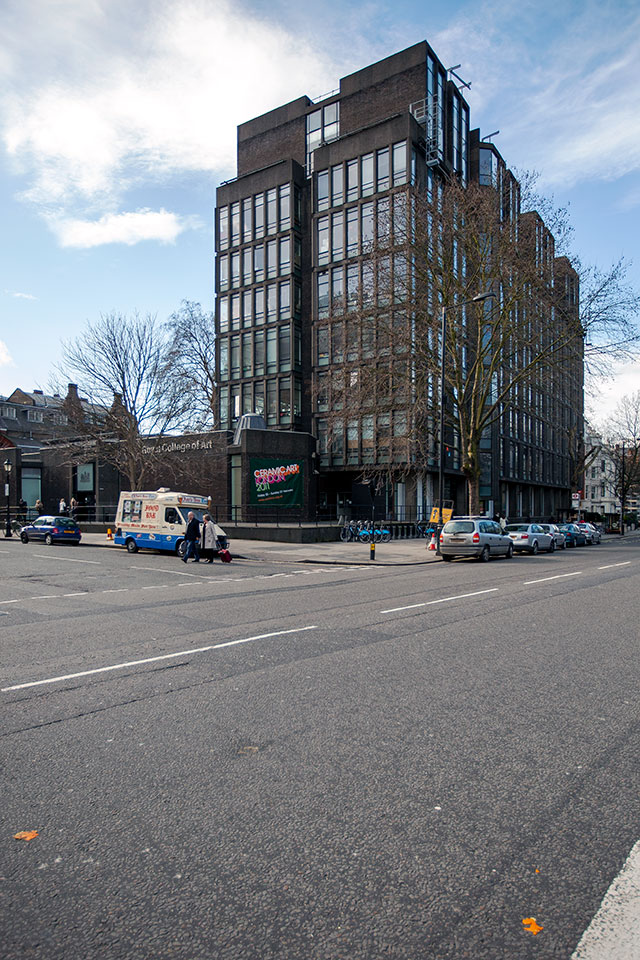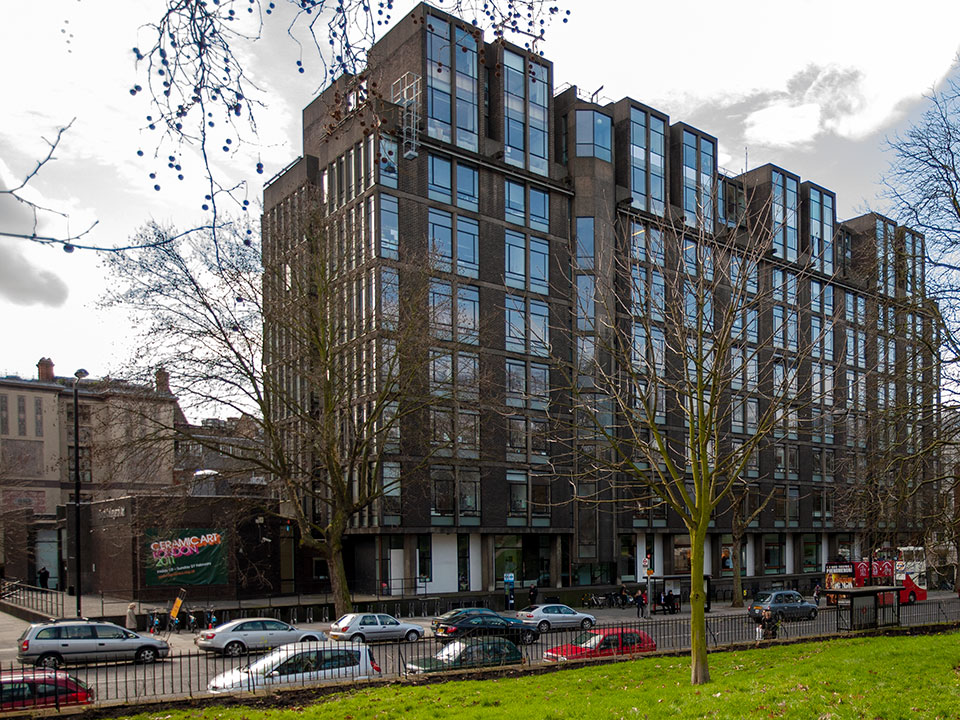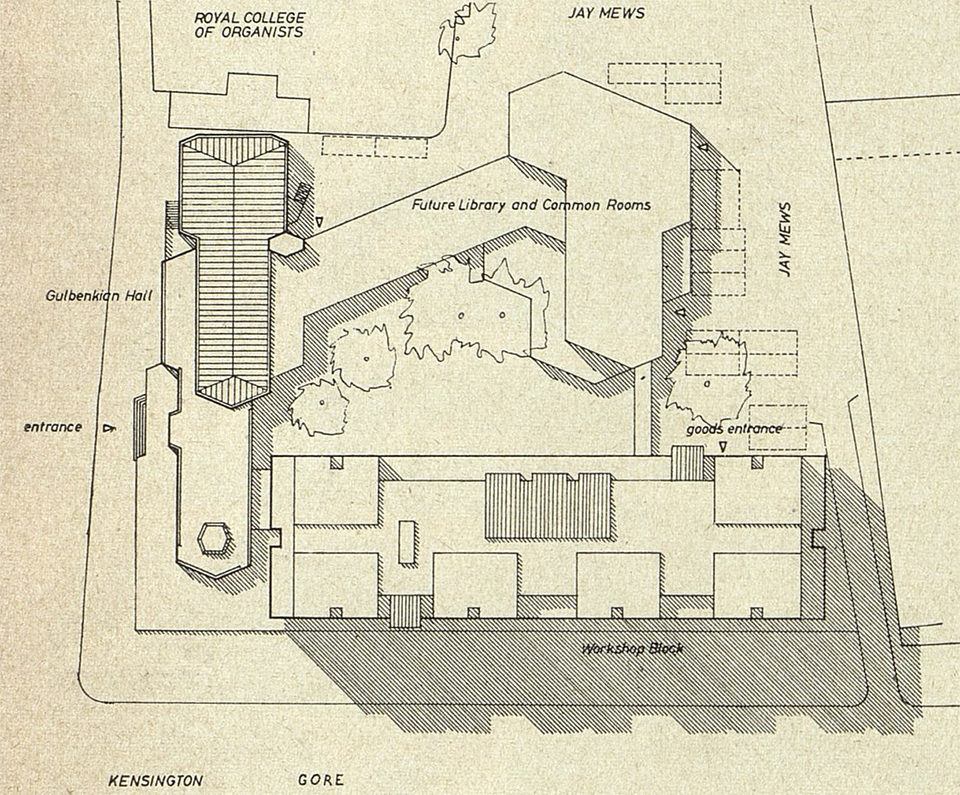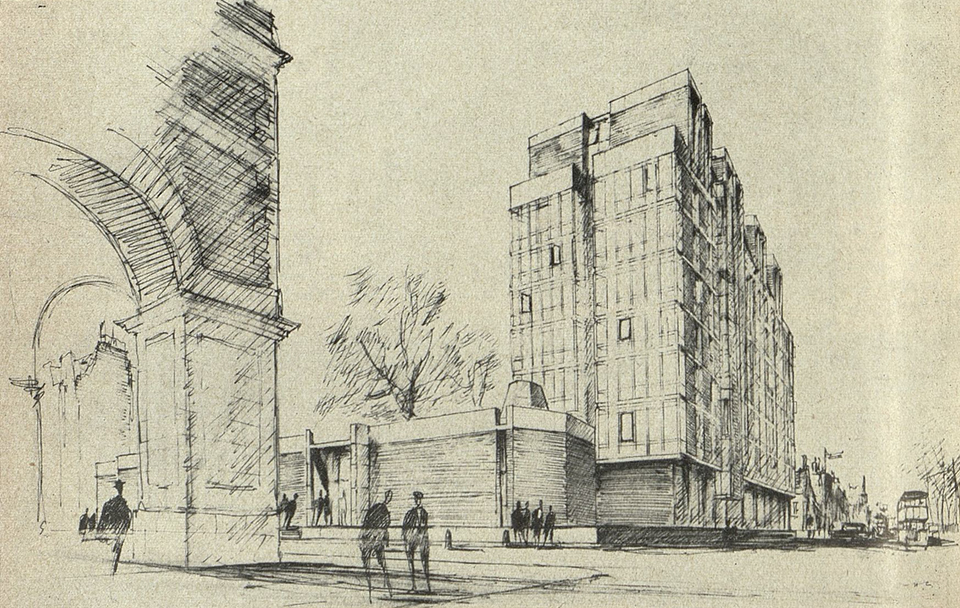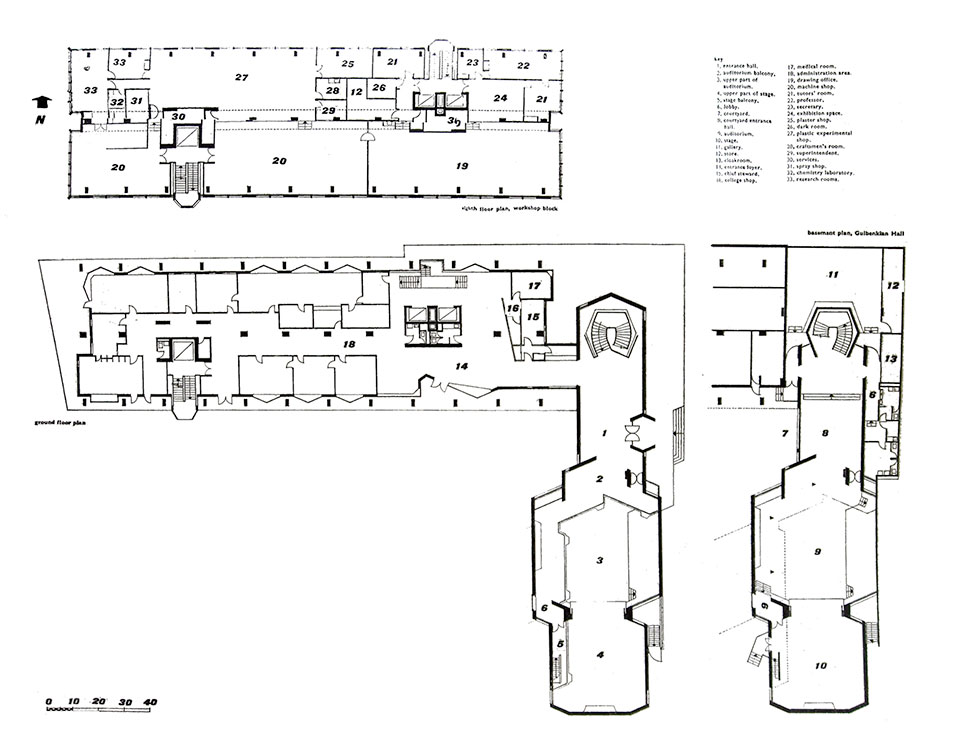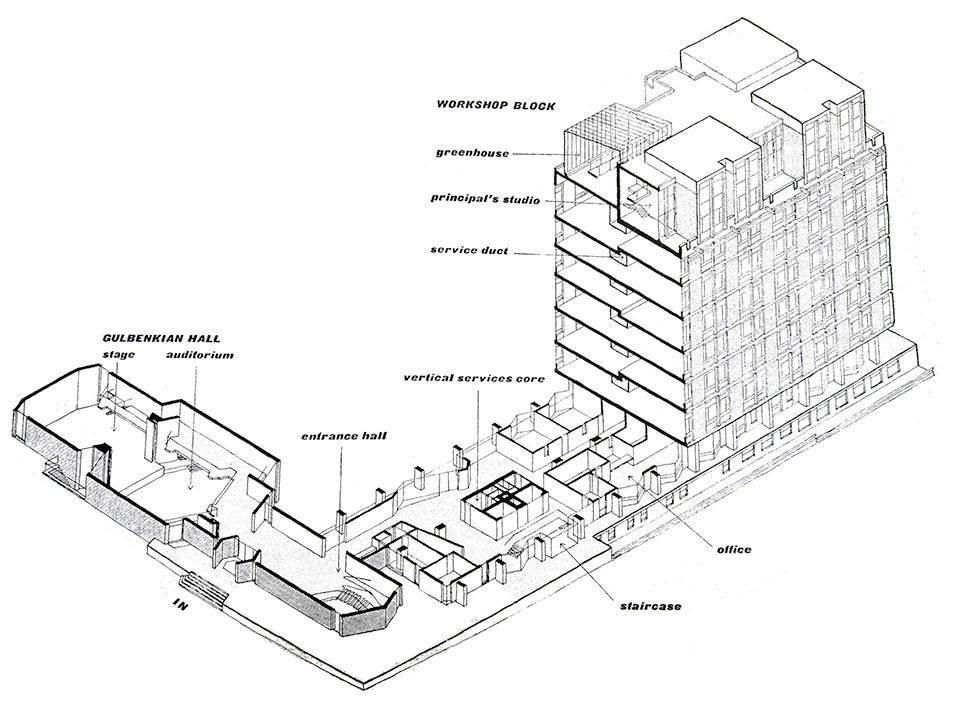Royal College of Art
1961
The Royal College of Art was first established in 1837 at Somerset House and moved in 1863 to premises on Exhibition Road. Following several failed attempts to create a purpose built new home in the inter-war period, in 1955 a new proposal to expand the RCA was founded and supported by a grant of £424,000. At the time it was recognised that such a sum 'would mean an austere building in the simplest materials', which in some way accounts for the building that now stands in a very prominent position on Kensington Gore [1]. It effectively balances the streetscape of the Albert Hall with its other flanking edifice, R. Norman Shaw's Albert Hall Mansions (1877-81). Shaw's scheme was criticised for its height and his readiness to challenge the dimensions of the Albert Hall. Nonetheless, the multiple hands designing the RCA took the massing cues from the Mansions. A reference to Shaw's gables and their rhythm is clear in the upper storeys that form the roofline. The architects of the new buildings were on the institution's own staff - H.T. Cadbury-Brown (Tutor), with Sir Hugh Casson (Professor of Interior Design) and R.Y. Goodden (Professor of Silversmithing and Jewellery) - Casson and Goodden worked together in the camouflage directorate during the Second World War. A staggered section allowed for spaces of varying height on either the north or south side of the main building to accommodate large scale machines in the workshops and for dedicated workshops to be adjacent to studios for specific subjects. A deliberate lack of corridors in the plan allowed for daylight from more than one direction in most spaces. The ground floor of the main block was dedicated primarily to offices, giving way at its eastern end to the entrance, which acted as a linking device to the Gulbenkian Hall, Library Block and Common Room Block, all set at a lower height to address the buildings behind. The entrance, facing the Albert Hall, was also intended to activate the space between the two buildings. The sombre tone of the facing brick sets the RCA apart from any of its surrounding neighbours and affords a brooding and robust presence that, according to Ian Nairn, 'smoulders through to your consciousness with quiet intensity: purple brick and concrete aggregate, humped up against the Albert Hall like a gruff egalitarian greeting' [2]. Its tough character and equally spartan materials made it ideal for the messy experimentalism of arts students, whilst its formal presence counterbalances the composition of north facing buildings addressing the exuberance of the Albert Memorial in the park opposite.
[1] Architectural Review, 1 March 1959, pp.203-204.
[2] Nairn, I. (1966) Nairn's London (London: Penguin Books) p.130.
